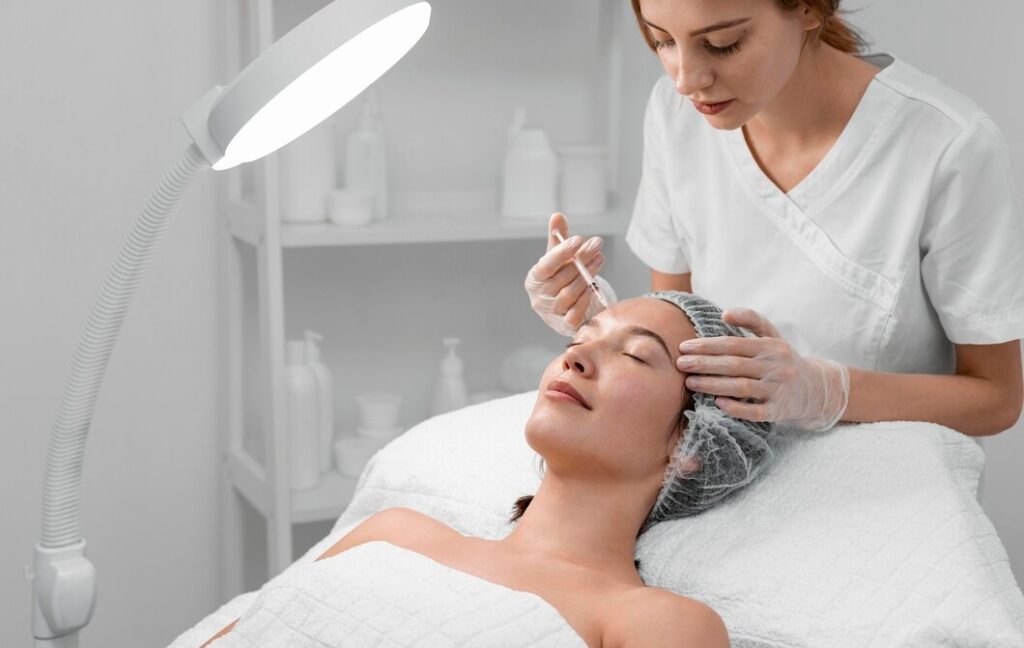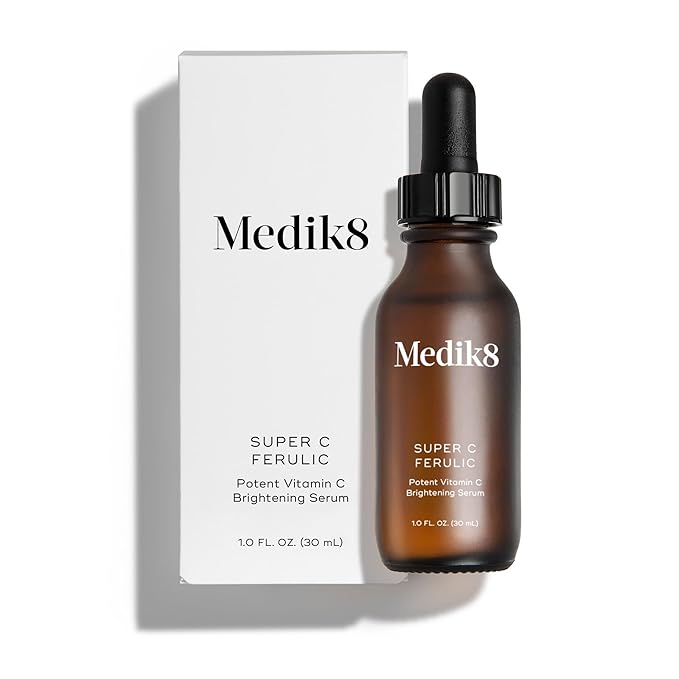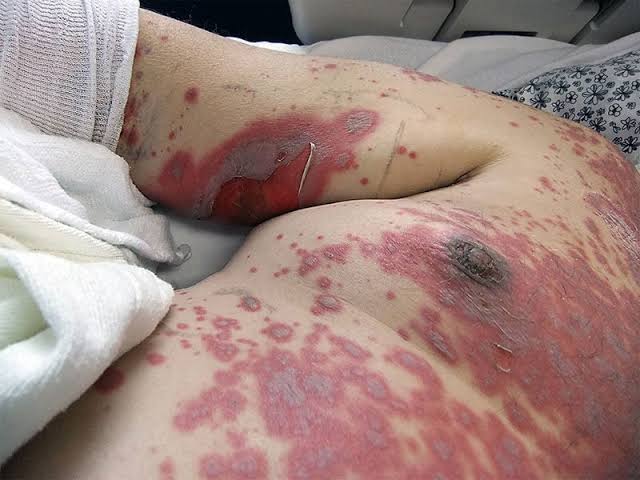Botox (Botulinum toxin) ;

Introduction
In the realm of cosmetic and therapeutic treatments, few names resonate as prominently as Botox. This neurotoxic protein, derived from the bacterium Clostridium botulinum, has revolutionized the fields of dermatology, aesthetics, and neurology.
What is Botox(Botulinum toxin)?
At its core, Botox is a neurotoxic protein known scientifically as botulinum toxin type A. Originating from the bacterium Clostridium botulinum, it undergoes meticulous purification to ensure safety for medical and cosmetic use. This potent toxin, when administered in controlled doses, exerts a temporary paralyzing effect on targeted muscles, offering a range of therapeutic and aesthetic benefits.
What is it made of?
The primary component of Botox is botulinum toxin type A, meticulously isolated and purified to eliminate impurities and enhance safety. This purified toxin is then formulated into a injectable solution, ready for medical and cosmetic procedures.
What is Botox used for?
The applications of Botox extend far beyond its reputation as a wrinkle-reducing agent. While it is widely utilized in cosmetic dermatology to diminish facial wrinkles and lines, its therapeutic potential is equally remarkable. Botox injections are employed in the treatment of various medical conditions, including but not limited to:
- Cosmetic Enhancements: Botox effectively reduces the appearance of wrinkles and fine lines, particularly in the forehead, around the eyes (crow’s feet), and between the eyebrows (frown lines).
- Migraine Relief: Studies have demonstrated the efficacy of Botox in alleviating chronic migraines, with injections targeting specific trigger points to reduce muscle tension and diminish pain.
- Hyperhidrosis Treatment: Individuals suffering from excessive sweating, or hyperhidrosis, find relief through Botox injections, which inhibit the release of acetylcholine, the neurotransmitter responsible for stimulating sweat glands.
- Muscle Spasm Management: Botox injections offer relief for conditions characterized by muscle spasms and involuntary contractions, such as cervical dystonia, spasticity, and eye twitching (blepharospasm).
Benefits of Botox:
The benefits of Botox are manifold, encompassing both aesthetic enhancements and therapeutic interventions. Some of the key advantages include:
- Wrinkle Reduction: Botox effectively smooths facial wrinkles and lines, restoring a youthful appearance with minimal downtime.
- Improved Quality of Life: For individuals suffering from chronic migraines or debilitating muscle spasms, Botox injections offer relief and the opportunity to regain control over their daily lives.
- Enhanced Confidence: Cosmetic enhancements achieved through Botox injections often lead to increased self-esteem and confidence, empowering individuals to present their best selves to the world.
- Non-Surgical Solution: Unlike invasive surgical procedures, Botox injections are minimally invasive, requiring no incisions or extensive recovery periods.
Medik8 Super C Ferulic – 30 Percent Ethylated L-Ascorbic Acid Vitamin C Serum – With Vitamin E and Ferulic Acid – Targets Signs of Aging

Medik8 Super C Ferulic – Vitamin C Serum
Preparation for Procedure:
Prior to undergoing Botox treatment, it is essential to engage in thorough preparation to optimize the outcomes and minimize potential risks. Key steps in the preparation process include:
- Consultation: Schedule a consultation with a qualified healthcare provider or licensed practitioner to discuss your goals, medical history, and any concerns or questions you may have.
- Medical Assessment: During the consultation, the healthcare provider will conduct a comprehensive medical assessment, evaluating your eligibility for Botox treatment based on factors such as current health status, medical history, and previous treatments.
- Discussion of Expectations: It is crucial to have a candid discussion with your healthcare provider regarding your expectations and desired outcomes from Botox treatment. This ensures alignment between your goals and the recommended treatment plan.
- Review of Potential Risks and Side Effects: Gain a thorough understanding of the potential risks and side effects associated with Botox injections, including but not limited to bruising, headache, temporary weakness, and asymmetry of facial expression.
- Refrain from Blood Thinners: In the days leading up to the procedure, avoid taking blood-thinning medications or supplements that may increase the risk of bruising at the injection sites.
- Hydration: Maintain adequate hydration by drinking plenty of water in the days preceding the procedure, as well-hydrated skin facilitates optimal results and minimizes discomfort during injection.
Procedure :
On the day of the procedure, you will undergo the following steps:
- Assessment: Upon arrival at the clinic or medical facility, the healthcare provider will conduct a final assessment of the treatment areas, confirming the desired outcome and marking the injection sites.
- Preparation: The treatment area will be cleansed and sterilized to minimize the risk of infection.
- Injection: Using a fine needle, the healthcare provider will administer Botox injections directly into the targeted muscles. The number of injections and dosage will vary depending on the treatment area and desired outcome.
- Duration: The entire procedure typically takes 10 to 15 minutes, making it a convenient option for individuals with busy schedules.
- Post-Treatment Care: Following the injections, you may experience mild discomfort, redness, or swelling at the injection sites. Apply ice packs as needed to alleviate any discomfort and avoid rubbing or massaging the treated area to prevent the toxin from spreading to adjacent muscles.
- Follow-Up: Schedule a follow-up appointment with your healthcare provider to assess the results of the Botox treatment and address any concerns or questions you may have.
Harmful or Side Effects:
While Botox injections are generally safe when administered by a qualified healthcare provider, there are potential side effects and risks to be aware of:
- Bruising: Mild bruising at the injection sites is common and typically resolves within a few days.
- Headache: Some individuals may experience a mild headache following Botox treatment, which usually subsides within 24 to 48 hours.
- Temporary Weakness: In rare cases, nearby muscles may become temporarily weak, resulting in drooping eyelids (ptosis) or asymmetry of facial expression. These effects are typically transient and resolve within a few weeks.
- Allergic Reactions: While rare, allergic reactions to Botox may occur, presenting as itching, rash, or difficulty breathing. Seek immediate medical attention if you experience any signs of an allergic reaction.
Summary:
In summary ,Botox stands as a remarkable testament to the intersection of science, medicine, and aesthetics. Its versatile applications in both cosmetic and therapeutic realms have transformed countless lives, offering solutions for a myriad of concerns ranging from facial wrinkles to chronic migraines. However, it is essential to approach Botox treatment with careful consideration, seeking guidance from qualified healthcare professionals and understanding the potential risks and benefits involved. With proper preparation, administration, and follow-up care, Botox can deliver transformative results, empowering individuals to look and feel their best.
• Frequently Asked Questions (FAQ’s) About Botox:
1. What exactly does Botox do?
Botox works by temporarily paralyzing or weakening targeted muscles, thereby reducing the appearance of wrinkles and fine lines on the skin. It blocks signals from the nerves to the muscles, preventing them from contracting and causing wrinkles to relax and soften.
2. Is Botox good for your face?
Botox can be highly beneficial for facial rejuvenation, as it effectively smoothens wrinkles and lines, resulting in a more youthful appearance. When administered by a qualified professional, Botox can deliver natural-looking results without compromising facial expression.
3. How long does Botox last?
The effects of Botox typically last between three to six months, varying depending on individual factors such as metabolism, muscle activity, and dosage. Regular maintenance treatments are often recommended to sustain the desired results.
4. Is Botox a good treatment?
For individuals seeking to reduce the appearance of wrinkles and fine lines, manage certain medical conditions, or alleviate symptoms such as excessive sweating or migraines, Botox can be an excellent treatment option. However, it is essential to consult with a qualified healthcare provider to determine suitability and discuss expectations.
5. What are the risks of Botox?
While Botox is generally safe when administered by trained professionals, there are potential risks and side effects to be aware of, including bruising, headache, temporary weakness or drooping of nearby muscles, allergic reactions, and asymmetry of facial expression.
6. What is the cost of Botox in India?
The cost of Botox treatment in India can vary depending on factors such as the clinic or medical facility, the qualifications of the healthcare provider, the number of treatment areas, and the amount of Botox used. On average, the cost of Botox injections in India ranges from a few thousand to tens of thousands of rupees.
7. Is Botox Painful?
Most individuals experience minimal discomfort during Botox injections, often described as a slight stinging sensation or pinprick. The use of topical numbing cream or ice packs can further minimize any discomfort.
8. How much Botox is used for a full face?
The amount of Botox used for a full face depends on factors such as the individual’s anatomy, the extent of wrinkles and lines, and the desired outcome. On average, a full face treatment may require anywhere from 20 to 60 units of Botox.
9. Why is Botox so expensive?
The cost of Botox treatment reflects various factors, including the quality and purity of the product, the expertise of the healthcare provider, clinic overhead costs, and geographic location. Additionally, ongoing research and development, as well as regulatory requirements, contribute to the overall expense.
10. Is Botox 100% safe?
While Botox is considered safe when administered by qualified professionals, no medical treatment is entirely without risk. It is essential to discuss potential risks and benefits with your healthcare provider and ensure that you receive treatment from a reputable clinic or practitioner.
11. Why do celebrities get Botox?
Celebrities often opt for Botox treatment to maintain a youthful appearance and enhance their facial features for on-screen performances and public appearances. Botox can effectively address wrinkles, lines, and other signs of aging, helping celebrities maintain a polished and refreshed look.
12. What works better than Botox?
While Botox remains a popular and effective treatment for wrinkles and facial rejuvenation, there are alternative procedures and treatments available, including dermal fillers, laser resurfacing, chemical peels, and microdermabrasion. The choice of treatment depends on individual preferences, concerns, and desired outcomes.
• Read more:

